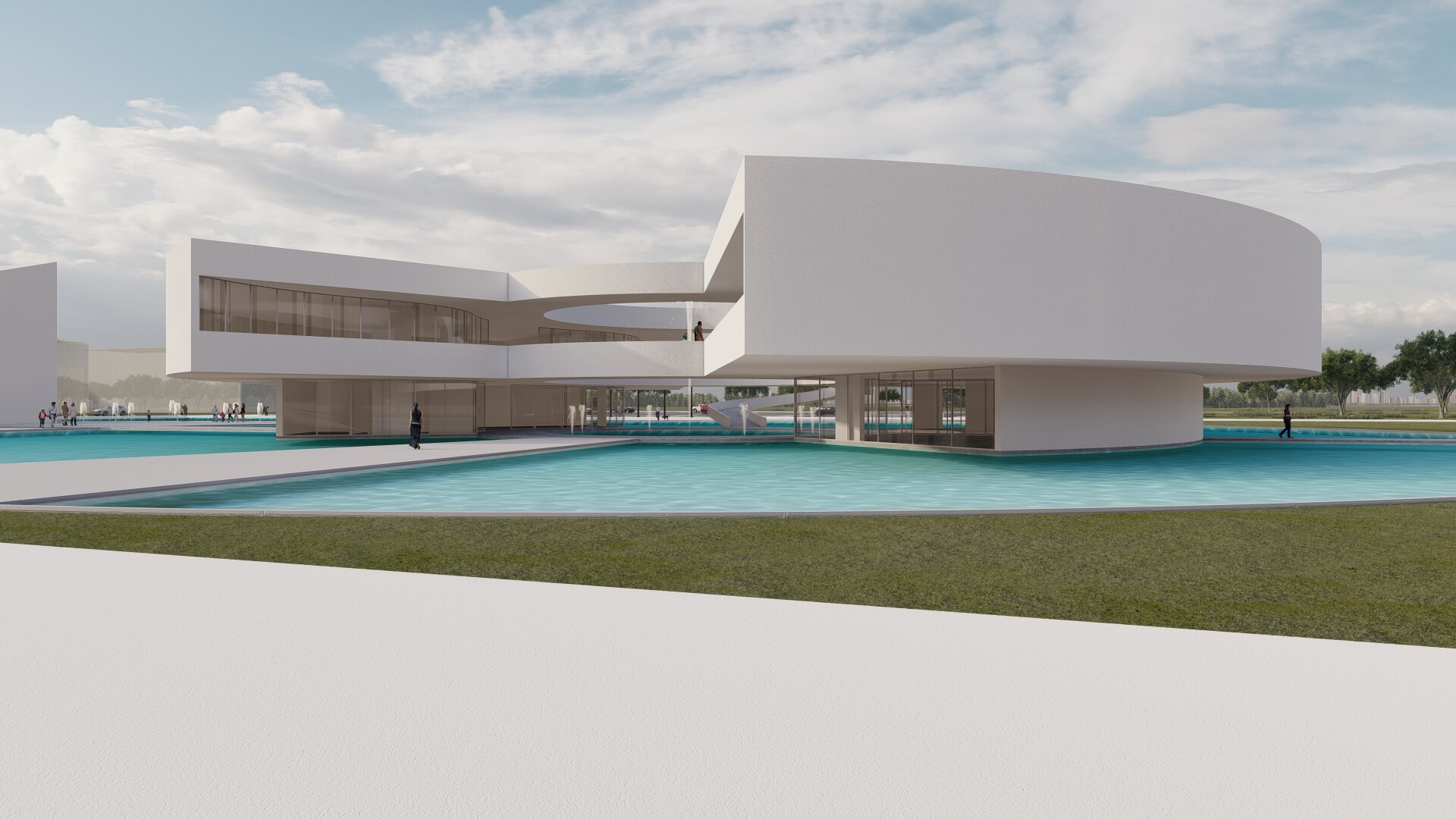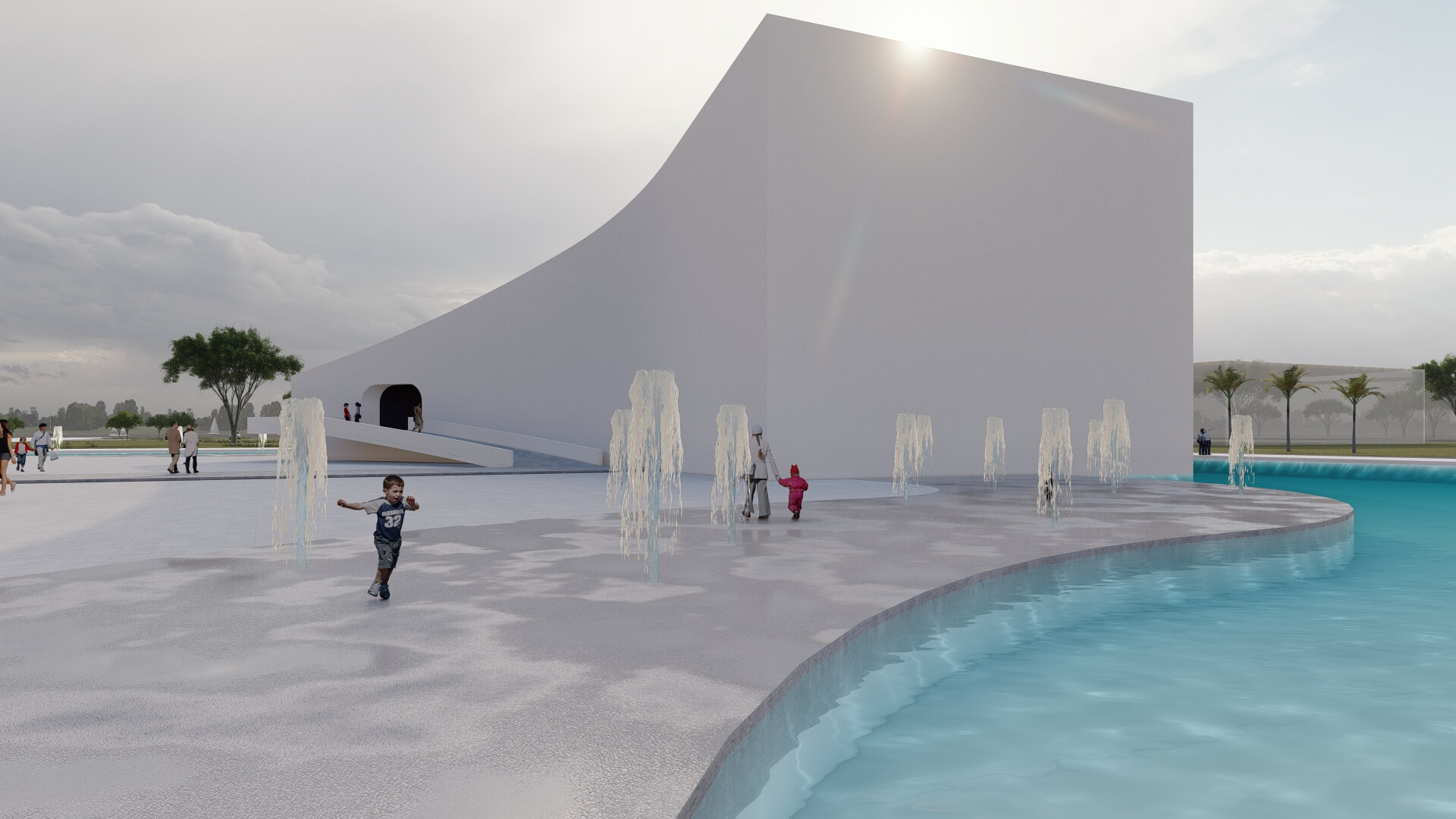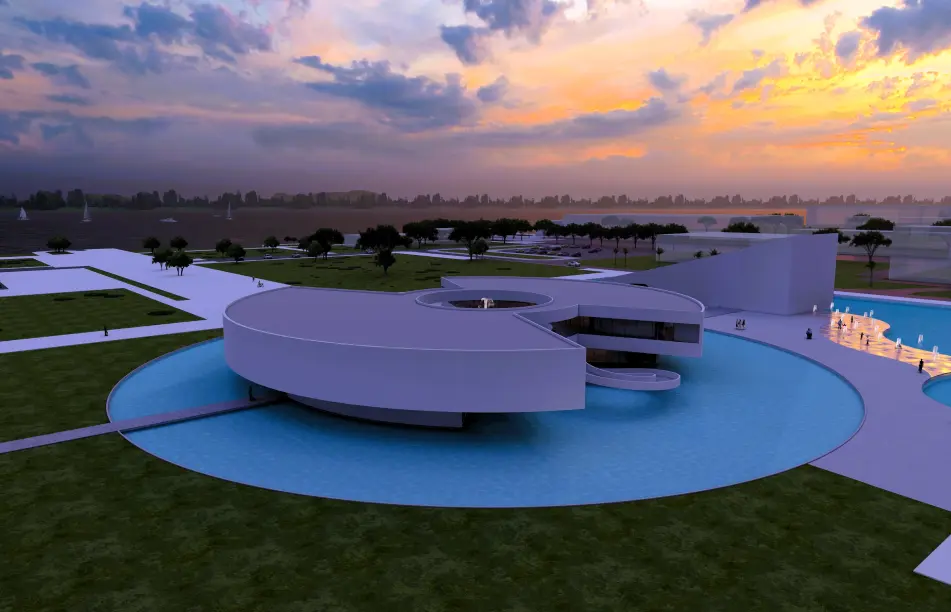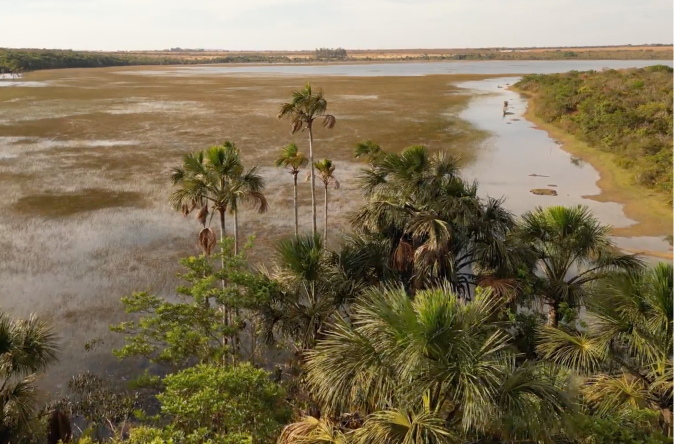





























MINA - International Water Memorial
The International Water Memorial (MINA) is a project dedicated to promoting learning, thoughts, and exhibitions about preservation and awareness when it comes to the usage of water resources, as well as telling people about the history of water as a vital substance for human survival, embracing its socio-educational, scientific, and historical-cultural essence for Brazil and the world.
This project, coordinated by the Regulatory Agency for Water, Energy, and Basic Sanitation of the Federal District of Brazil (Adasa), in partnership with the Government of the Federal District of Brazil, the Environmental Sanitation Company of the Federal District of Brazil (Caesb), and international countries and organizations, consists of an educational proposal for disseminating information on water resources and basic sanitation. It aims at raising awareness and mobilizing the population in adopting individual and collective practices that promote the rational, sustainable, and responsible use of water.
The architectural project was conceived by Oscar Niemeyer and features organic and curved forms that imitate the fluidity of water. The monument aims to preserve the history of water resources and becomes a global reference in promoting models for the rational use of water.


The Project

The architectural complex of MINA features a museum designed by the hands of the ingenious Oscar Niemeyer, a key figure in the development of modern architecture and historically linked to the conception and construction of Brasilia. In 1960, the “Capital of Hope” emerged from his architectural lines, combined with the work of Lúcio Costa, Athos Bulcão, and other great names involved in the venture of the new city. Today, these lines of hope manifest in the sustainable future envisioned by MINA.
In addition to his monumental works in Brasília, the master architect is also renowned for conceiving iconic museums and memorials around Brazil and the world, such as the National Museum, the Museum of Contemporary Art in Niterói, the Latin America Memorial, Le Volcan, and the Oscar Niemeyer International Cultural Center.

With MINA, it is no different:
the museum will be an architectural gem in Brasília, situated on the shores of Lake Paranoá.
Four Cores
The International Water Memorial will be at the forefront of global discussions on water resources, emphasizing the management, education, and memory of sanitation policies in cooperation with service providers, companies, and local, national, and international organizations. The facility will include the Water Museum, the Water Studies Center, the Amphitheater, and the administrative area.

Water Museum

The essence of the museum transcends conventional standards, delving deeply and engagingly into fascinating scientific themes. Within its walls, we are led to explore the water cycle, the abundance of life in aquatic ecosystems, and the vital connection that binds water to all forms of life on Earth. Furthermore, the influence of water on society is addressed with a technological touch, combining high-tech audio and video resources to create a unique sensory experience. It is in this space that science becomes tangible and inspiring, engaging our senses and stimulating our intellect.



Theater

The theater is a multifunctional space that hosts scientific events and national and international achievements. In this environment, knowledge and innovation are celebrated, bringing together experts from around the world to share discoveries and drive advancements in various fields. These events stimulate local economic development and strengthen diplomatic relations. They also play a vital role in raising awareness of global issues and promoting international dialogue and collaboration.

Water Studies Center

The Water Studies Center of the Federal District of Brazil will be an institute for technological research, offering courses focused on water management, aiming to contribute to the formulation of policies aimed at mitigating the local and global impacts of climate change occurring worldwide.



Operational
and Administrative
Structure

Designed to address responsibilities related to the maintenance and management of MINA.
The Federal District of Brazil


The perfect place to build the International Water Memorial.
The Federal District of Brazil plays a prominent role in water resource management at both national and international levels, regulating water use, increasing its availability, promoting conservation, and fostering awareness for sustainable utilization. This is a mission that requires close collaboration with governmental entities, basic sanitation services, academic institutions, and local, national, and international organizations, serving as a global model to be followed.
Located in Brasilia, Brazil, MINA is strategically positioned in the heart of the Brazilian Cerrado, a region that, despite having low surface water availability, significantly contributes to the country’s hydrographic basins, considered the Cradle of Brazil’s Waters.
The Cerrado is the second-largest biome in Brazil and South America. The central plateau region, where the Federal District is located, is part of this biome, housing a large number of springs and water recharge areas, playing a fundamental role in distributing water resources to other Brazilian regions and the South American continent. Of the 12 main hydrographic basins in Brazil, eight have their sources in the Cerrado.
Moreover, the Federal District of Brazil presents a fabulous and unique hydrographic phenomenon called “Águas Emendadas” (Joined Waters, freely translated), involving the birth of two major hydrographic basins flowing from the same point. To the north, the Tocantins/Araguaia basin, and to the south, the Paraná basin. The latter is of international importance as it forms the Platina basin, which bathes Argentina, Paraguay, and Uruguay.
The Logo
The logo of the International Water Memorial was constructed from various references that comprehensively and cohesively represent the concept of MINA.
The logo is formed by three streams composed of dots representing H2O molecules.
The dots that are more spaced apart represent the gaseous state. In the middle of the stream, the distance between the dots decreases, representing the liquid state. At the end of the stream, the dots come together, representing the solid state.
Each stream represents a watercourse of “Águas Emendadas” (Joined Waters, freely translated) phenomenon.
In the center, the shape of a droplet is emphasized to highlight the symbol’s theme.
Location
SHTN, Trecho 1, Asa Norte, Brasilia - Federal District of Brazil
Brazil – Lake Paranoá. The urban artificial lake, located in the central region of Brasilia, is a symbol of the capital of Brazil and an example of good basic sanitation management and natural beauty.
The lake was conceived in the 19th century and inaugurated in September 1959, during the presidency of Juscelino Kubitschek. It was created to generate electricity and bring more moisture to the chosen region to be the new capital and political headquarters of the country. Later, it would be included in the projections of the architect and urban planner Lucio Costa, immortalized by the urban design project of the Pilot Plan of Brasilia, as a space for preservation and leisure.
Currently, the multiple uses of the lake encompass landscaping, recreational purposes, energy generation, effluent dilution, and supplying water to the local population.
For more information regarding the International Memorial of Water, contact us at Adasa.
